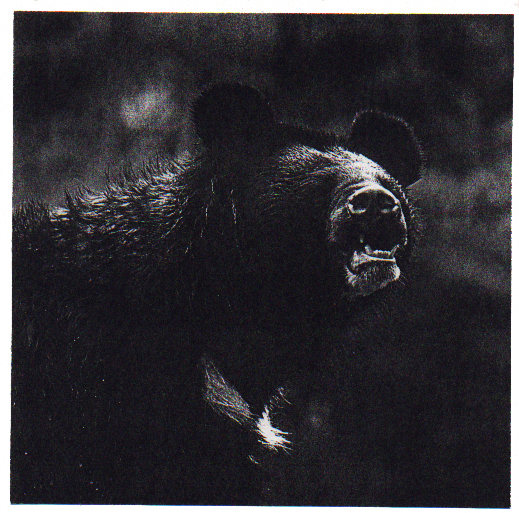 This collection of student work is from Frank Keim's classes. He wants to share these works for others to use as an example of culturally-based curriculum and documentation. These documents have been OCR-scanned and are available for educational use only.
This collection of student work is from Frank Keim's classes. He wants to share these works for others to use as an example of culturally-based curriculum and documentation. These documents have been OCR-scanned and are available for educational use only.Special | A | B | C | D | E | F | G | H | I | J | K | L | M | N | O
P | Q | R | S | T | U | V | W | X | Y | Z | ALL
Asiatic Black Bear by Leslie Hunter, Jr.: Asiatic Black Bear
Asiatic Black Bear (Selenarotos thibetanus) There are about 12 different kinds of bears in the world, but the one that I think stands out the most is the Asiatic Black bear. This bear lives in the southern part of Asia. Its range is from the northern tip of China to the central part of Russia. Although this bear isn't very big, it is very fierce. It is about five feet tall and 1.5 meters in length. It weighs about 250-300 pounds depending upon where it is located in Asia. The northern Asian Black bears are a little bit larger than the ones south of them. This is because of the colder climate. They need the extra bulk to stay warm. These bears have three different names: Moon bear, Himalayan bear, and Asiatic Black bear. The most common name they go by is Asiatic Black bear. Most of the time these bears are calm and gentle, but they are known to be fierce as well. There are reports that this bear has killed cattle, sheep, and on occasion man. The bear probably didn't attack the man on purpose because they are afraid of man. It was most probably a provoked attack. When winter comes to Asia, the Moon bear finds a den and falls asleep. This bear doesn't really hibernate though because it doesn't sleep very long. It is special because before it goes to sleep, it makes its own bed to sleep on out of twigs and grass. This bear mostly eats meat and vegetation. During its life time it may have 15 cubs. It is also very fond of honey. When it finds honey in the wild, it will stop at nothing to get the honey from the bees. This bear has a population of about 25,000 in Asia. The future of this bear looks great. Resources: Ecyclopedia B. By: Leslie Hunter Jr. | |
|



